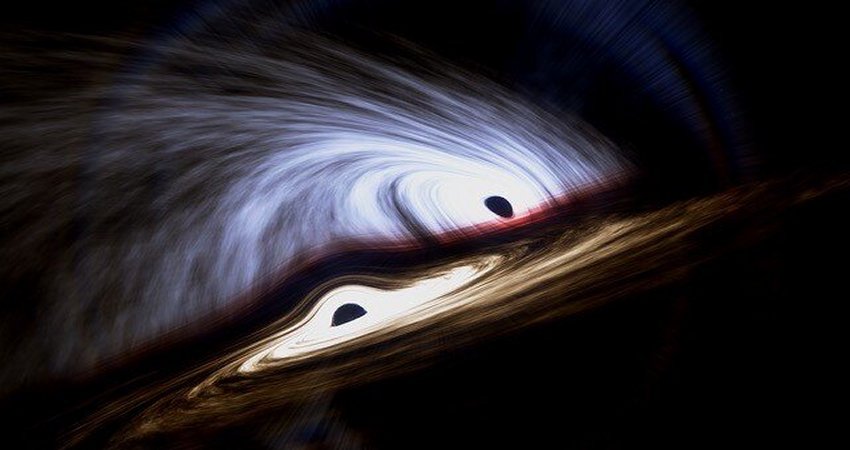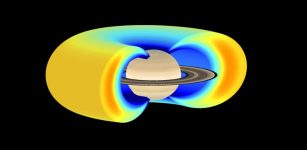Why Do Some Black Holes Merge?
Eddie Gonzales Jr. – MessageToEagle.com – A series of discoveries providing some of the first hints as to the origin of black hole mergers have been announced by researchers from the LIGO and Virgo Collaborations, accompanied by a team from Monash University––members of the ARC Centre of Excellence for Gravitational Wave Discovery (OzGrav).
 Artist’s impression of two black holes about to collide. Credit: Mark Myers, ARC Centre of Excellence for Gravitational Wave Discovery (OzGrav).
Artist’s impression of two black holes about to collide. Credit: Mark Myers, ARC Centre of Excellence for Gravitational Wave Discovery (OzGrav).
“We are announcing the discovery of 44 confirmed black hole mergers, which is a more than a four-fold increase in the number of previously known gravitational-wave signals,” explains Monash University School of Physics and Astronomy Ph.D. student, Shanika Galaudage, who helped write one of the new LIGO papers.
She adds: “With so many black holes to study, we can start to answer deep questions about how these systems came to merge.”
Over the past five years, astronomy has been revolutionized as scientists have used ripples in the fabric of spacetime, called gravitational waves, to reveal the secrets of the previously hidden world of black holes. Gravitational waves are created when two black holes merge in a cataclysmic release of energy, but until now, there were few clues as to how and why black holes merge.
See also:
Two Black Hole Merging Results In A Mass 142 Times Heavier Than Sun
Pair Of Supermassive Black Holes Discovered On A Collision Course
New Evidence That Merging Supermassive Black Holes Create Even More Powerful Forces In The Process
A key clue comes from the fact that black holes spin. The orientation of the black hole spins affects the gravitational-wave signal.
“There are two theories for how two black holes can get together. Sometimes, pairs of stars called binaries make pairs of black holes that merge, creating ripples in spacetime called gravitational waves. Alternatively, two black holes can stumble into each other,” study author Dr. Colm Talbot, also from the School of Physics and Astronomy, said
The verdict? “It seems there are multiple ways for two black holes to get together,” OzGrav Chief Investigator Professor Eric Thrane from Monash University said, adding that “some binary black holes are born from pairs of stars. Others wander the cosmos before finding a partner to merge with. Either way, a tremendous amount of energy is released in gravitational waves.”
Written by Eddie Gonzales Jr. – MessageToEagle.com Staff










